ISAAC YOUNG TAULMAN
November 2, 1819 - May 24, 1913
by
Rev. Jim Taulman (Retired)
 |
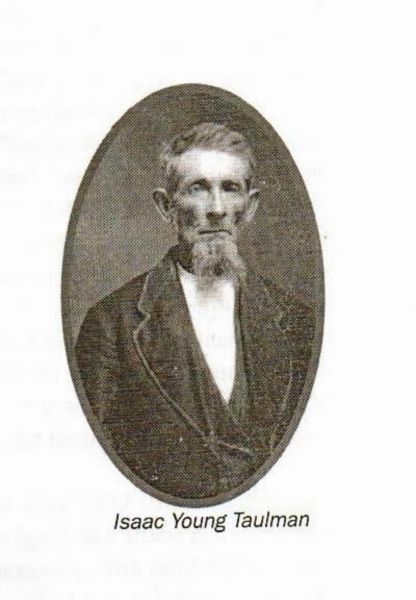 |
 |
When Isaac Young Taulman was born in Columbia, Ohio, on 2 November 1819, Indiana-------which would eventually be his home------had been a state for only three years. Indiana was still in the developmental stage. In the words that Rogers and Hammerstein would later use to describe Oklahoma, the state Isaac Young's son, Isaac Newton, would live in several years later, Indiana, too, was "a brand new state."
BRAND NEW STATE
1819 - 1829
Because it was so new, it was necessary to develop the state's infrastructure to move products to market and allow travel throughout the state.1819 - 1829
Since transportation is so important to any state, Indiana began the process of trying to build transportation lines across the wilderness. Their actions centered in four areas: canals, highways, railroads, and ships.
In 1832, shortly after Isaac Young moved to Indiana, Indiana began a project in the northeastern part of the state to connect the navigable portion of the Maumee River with the Wabash River---a distance of seven or eight miles. The Wabash and Erie Canal proved to be a tremendous financial loss, but it indicated the growth and expansion of the state.
; In addition to the Erie Canal, Indiana constructed the National Road---or as we know it today---Highway 40. The original plans called for the road to go through Columbus, in Bartholomew County, the county that bordered Jennings County on the north and west. However, Indiana Congressman Oliver H. Smith successfully lobied to change the highways path and run it through Indianapolis. The road first moved into Indiana through Wayne County in 1827 and in 1831 there was an appropriation of $75,000 for work that included the bridge over the White River in Indianapolis making this quite possibly the location for the first ancestor of Indiana's beloved covered bridges.
In 1836, construction began on Indiana's first railroad, the Madison and Indianapolis. This railroad started in Madison and passed through the Taulman farm in Jefferson County, just north of Madison. Later the M&I became the Baltimore & Ohio Railroad. The location of the railroad was a source of litigation between Isaac's mother, Elizabeth, and the railroad.
A fourth means of transportation was by boats on the Ohio River. Early on, Madison became a center for transporting goods on the Ohio River. Goods were shipped down the river to Madison from such places as Pittsburg and by train from Madison to Indianapolis and points all over the Midwest.
Madison's first shipyard was located "just below what is now Ferry Street," built around 1835, this small facility turned out Madison's first steamboat, the Irvington, on the Fourth of July, 1836. Despite the fact that this yard produced numerous steamers in its short existance, the financial panic of 1837 caused boat contracts to dry up and brought about a momentary pause in Madison boat-building.
The Panic of 1837 hit when on 10 May 1837 in New York City every bank stopped by a five-year depression, with bank failures and record high unemployment levels. Isaac Young would have been eighteen when the panic hit in 1837.
Migration into Indiana, mostly from Kentucky and Ohio, was so rapid that by 1820 the population was 147,176. The first state capital was in the southern Indiana city of Corydon about seventy miles south and west of Paris Crossing.
In 1816, Abraham Lincoln's family moved to southern Indiana from Kentucky and settled near present-day Gentryville---about a hundred miles from Paris Crossing. They constructed a cabin near Little Pigeon Creek that measured 16 X 18 feet that had only one window.
Life was difficult in Jennings County. It was the frontier. As late as 1840, Thomas Egan built a cabin in Jennings County that had a dirt floor with a stump in the middle of the room with boards nailed on top that was used as a table.
While this was probably the exception since the story has survived in Jennings County history, the homes were likely quite primitive. There is not much reason to believe that Isaac's family lived in a cabin much different from the cabin in which Lincoln's family lived---at least at first. As late as 1850, the First Marion Baptist church built a church building from logs.
1833 - 1845
Very little is known about Isaac Young's stay in Cincinnati. Exactly when Isaac Young moved to Madison with his family is not known. It was likely about 1829 - 30 when he would have been ten or eleven years old. The family bought a 160-acre farm a short distance north of Madison.
Isaac Young's father, John, died in 1833. At that time Isaac would have been only fourteen.
Their father's death brought many changes in their lives. Isaac along with some of his other siblings moved from Madison to Jennings County and settled in the Paris Crossing area. Evan, his older brother, moved to Clark County, Indiana, for a while. This move may have occured when the M & I Railroad went through their farm in 1836-37, separating the house and outbuildings from the rest of the 160 acres.
Jennings County was a good place to settle. It was easily accessable to the new railroad that ran between Madison and Indianapolis allowing farm products to be shipped easily. The terrain itself was appealing. "Near the streams the surface of the county is hilly and broken, and moderately fertile, except in the beech flats, at the head of the streams, where it is only fit for grass. There is an abundance of excellent timber in the county, of which large quantities are exported. There are also good quarries of limestone, from which the interior of the state is largely supplied."
Isaac Young's older brother Harman Taulman had one of the first saw mills in Jennings County. It was a sash saw that went up and down. "Sash sawn" boards and timbers had unmistakable vertical saw marks left by traditional water powered up and down sawmills of the early nineteenth century.
Harman probably sawed timber for the Madison to Brownstown plank road, which today is Indiana State 250. The highway runs from Madison up Highway 7, turns west near Lancaster through Paris, Paris Crossing, Cana, and Seymour, and then to Brownstown. The existance of the plank road explains much of the movement of early folks in the area between Madison, Lancaster, Paris, and on to Seymour. Harman also owned a store in the area.
In 1845, the Baptists in the United States fought their own civil war before the rest of the nation did. Those in the South formed the Southern Baptist Convention and those Baptist churches in the North that had been a part of the Triennial Convention formed the American Baptist Convention. The churches in Indiana that the Taulman family attended were related to the American Baptist Convention with the possible exception of Coffee Creek Baptist Church. Although Coffee Creek later became an American Baptist Church, at the time Isaac Young lived it likely was a Primitive Baptist congregation.
Marriage and Family
1846 -
On 22 November 1846, Isaac married Grisilla Jane Foster (b. 12 September 1826; d. 3 August 1868) Isaac
was thirty-seven and Grissilla was twenty.
The attached picture is not very good quality, but it includes sisters Mary Ann Foster Steele (left and
Grissila Jane Foster Taulman (right) along with their mother Penelope Elizabeth Webb Foster.
Apparently Isaac first became a property owner when his father died and in 1835, John's 160 acre
farm was divided among Elizabeth and her nine children. As a result of the division, Isaac received a
strip of this farm that was "13 rods in width" but of unknown length. The rest of the children received
a similar amount of land. A rod is 5.5 yards in length. Isaac's piece of land was 71.5 yards wide - about
three-fourths the length of a football field. The dimensions of his inheritance are difficult to understand
since the farm was 160 acres.
On 28 October 1850, four years after he married Grissella, Isaac Young bought from his mother
Elizabeth and from John and Susan Taulman five acres of land in Jennings County for twenty-five dollars.
The farm was about seven miles outside of Paris Crossing. The house was located "about the third
cross roads west of Commiskey [which] used to be called Millers Corner....[There was] a blacksmith
shop there. Not quite a mile west is where grandfather [Isaac Young] lived."
Isaac and Grissilla's first child was born just less than a year after their marriage. Sarah Catharine
was born on 16 October 1847. Interestingly Isaac's oldest sister also named Sarah; he likely named
his daughter after his sister. He did not maintain the Dutch custom of naming his first daughter after
his mother. About every two years for the next twenty years, a child came into the family--four girls
and six boys. Isaac Young's father had had nine children; Isaac Young outdid him by one.
John Osborn 3 June 1849
Mary Caroline 17 October 1851
Charles Mandeville 24 August 1853
Perry Burns 17 August 1855
Margaret Clestine 20 February 1858
Elizabeth Ann 24 November 1859
Isaac Newton 6 January 1862
Albert Edwin 16 January 1864 (he died when he was less than a year old)
Edward Alfred 26 January 1866
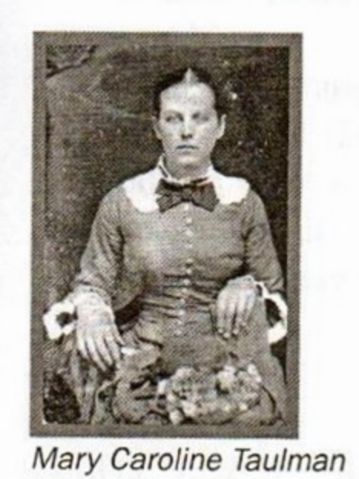 |
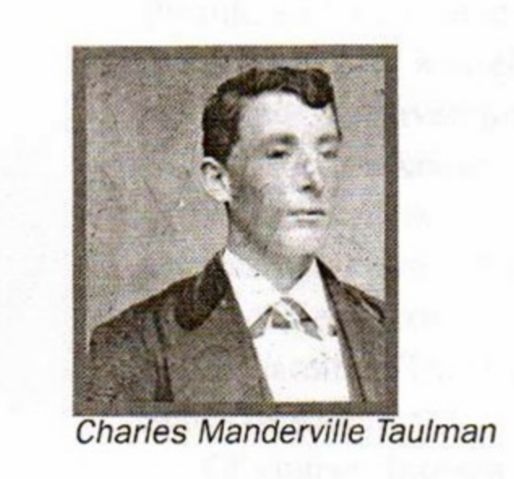 |
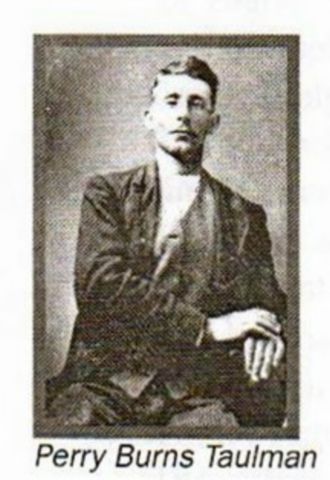 |
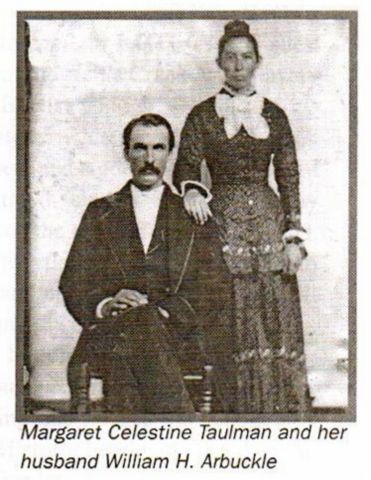 |
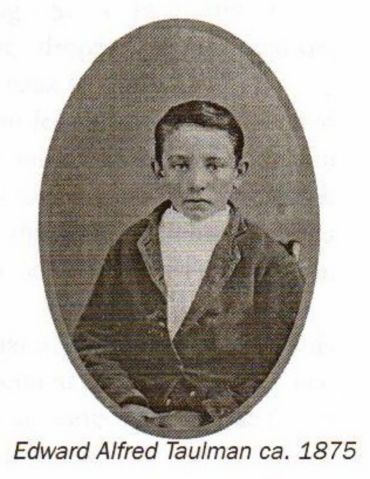 |
At the time Isaac Newton was born, Isaac Young lived in Slate, Jennings County, Indiana.
On 18 September 1850, Isaac and his family lived in Marion Township, Jennings County. The census that year reflected one of the problems the name Taulman has often
generated. The census taker misspelled the name Tolmon. This may indicate that (1) the census taker was new to the area and did not know the family, (2) that Isaac and his
family were not well known in the area, or (3) that who ever gave the census taker the information about Isaac's family could not read and write.
The census also listed Isaac's wife only as Jane. Apparently she preferred that to Grissilla. But interestlingly enough, the census lists her as being thirty-four--four years
older than Isaac. Other evidence indicates she was born 12 September 1826---or seven years after Isaac was born.
The winter of 1855-56 was one of the coldest winters on record. Persistant cold marked the period from Christmas 1855 until 10 February 1856. A hundred miles north in
Germantown, Ohio, on 8 January temperatures were below zero all day and there was a "piercing wind."
In the autumn of 1857, and "epidemic of fever ravaged this area" and John and Harriett Deputy--neighbors of the Taulmans---lost four children between September 29 and
October 11, 1857. Apparently, Isaac Young did not lose any one to the fever, but this had to affect him to have so many of their neighbors die in such a short time.
CIVIL WAR
1860 - 1865
On November 6, 1860, Abraham Lincolm was elected the sixteenth President of the Untied States. In January after Lincoln, a known opponent of slavery, was elected
president, the South Carolina legislature called a state convention. The delegates voted to remove South Carolina from the union known as the United States of America.
The secession of South Carolina was followed by the secession of six more states -- Mississippi, Florida, Alabama, Georgia, Louisiana, and Texas -- and the threat of
Secession by four more -- Virginia, Arkansas, Tennessee, and North Carolina. These eleven states eventually formed the Confederate States of America.
Of course, Indiana produced many pro-slaveryadherents, but the overall atmosphere was anti-slavery. However, something about the atmosphere helped instill in Lincoln
some of his anti-slavery beliefs.
The atmosphere likely filtered into the thinking of many of those in Jennings County -- including Isaac Young and his family.
Jennings county played a significant role in the anti-slavery effort. Less than eight miles from Paris Crossing where Isaac settled was the town of Lancaster. Anti-slavery
Baptists had built Eleutherian College in Lancaster in the 1840's to educated men and women, regardless of race, in the same building. This was a rarity for the time.
The school was founded by Rev. Thomas Craven of Oxford Ohio, who came to Lancaster as a guest preacher at the Neil's Creek Anti-Slavery Regular Baptist Church. He
told of his dream where whites and blacks, men and women, and students of mixed blood would attend classes together. Many residents of the area offered to help and,
working together, a school dedicated to freedom and equality was built on a hill overlooking the community.
This building was also used for Underground Railroad activities. Today the building that housed the college is a National Historic Landmark, listed on the National Register
and the Network to Freedom.
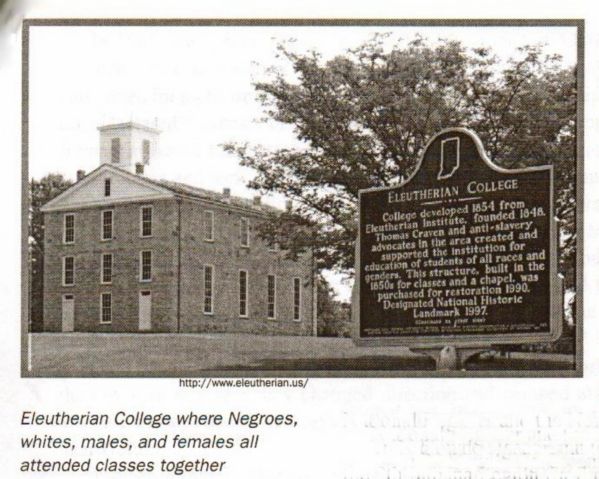 |
In 1861 when Isaac Young was forty-two years of age, he enlisted in the 9th Indiana Legion for thirty days. Not much else is known about his military service. To have been
gone longer than thirty days would have created a real hardship on his family. He had seven children at home plus a wife. The youngest Elizabeth Ann was three, and the
oldest, Sarah Catharine, was fourteen. He may have enlisted to draw the salary, which was $13 per month for Union privates.
As the Civil War approached, feelings in Indiana ran high. Indiana was a free state, and Jennings County was a significant stop on the Underground Railroad.
One story that certainly made the rounds of all the storytellers involved a slave, Alexander McClure. In April 1860, McClure who weighed 200 pounds shipped himself
from Nashville, Tennessee in a two-foot by three-foot box to the well-known Underground Railroad conductor Levi Coffin (who was then living in Cincinnati, Ohio).
Placed in a box at 10:30 a.m. and shipped by the L&N Railroad from Nashville, he made the over fifteen-hour trip to Seymour, Indiana, where the box had to be transferred
to a train heading to Cincinnati. Sadly, in the process of moving the box, the train station employees dropped the box, and out came Alexander, he was arrested and sent
back to Nashville.
Thomas Hicklin, an active abolitionist in Jennings County, operated an Underground Railroad station one-half mile east of San Jacinto in Jennings County and piloted
blacks to another station on Otter Creek in Campbell Township, and to a station at the home of John Vawter, a Baptist minister. Instead of continuing on, some fugitives
remained in a black settlement southwest of Vernon.
In 1861 the Vernon Banner reported that about nine hundred yards of flannel had been purchased and manufactured into shirts for the two companies of soldiers from
this county, who were quartered at Camp Morton in Indianapolis.
In 1861 the Vernon Banner also reported that a citizen of Montgomery Township had been selling fat hogs to a firm in Louisville, which were contracted for some time
before hostilities broke out. Those shipping the hogs declared "contract or no contract" no more shall be shipped. The Banner affirmed that action. "That is right. Stop
the traffic forthwith Our brothers and sons have gone to defend the flag of our Country and we must not feed the traitors who are to meet them in battle array."
Union General Lew Wallace was asked by Governor Oliver Morton to help defend Indiana against a group of approximately 3,000 Confederate cavalrymen led by
General John Hunt Morgan. They crossed the Ohio River at Brandenburg, Kentucky, on July 8, 1863, and left the state by crossing the Whitewater River at Harrison on
July 13, 1863.
On 11 July 1863, Morgan's Raiders traveled to Paris Crossing and then to Vernon where they changed direction and camped at Dupont, Wallace's troops arrived in
North Vernon then marched on foot to camp near Holton.
The 9th Indiana Volunteer Infantry Regiment was a volunteer infantry regiment in the Union Army during the American Civil War. It was organized on 22 April 1861, for
three months service in Indianapolis.
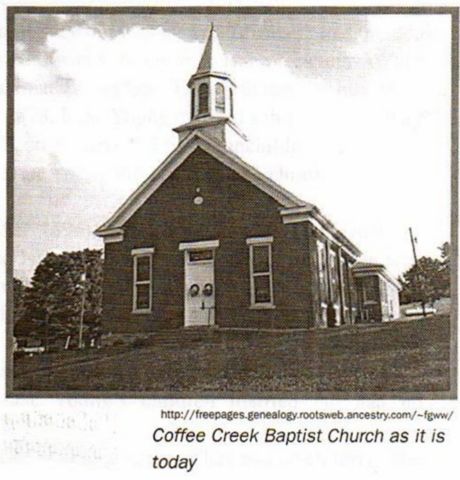 |
POST CIVIL WAR
1866 - 1913
Isaac belonged to the Coffee Creek Baptist Church. He had joined this church by baptism July 1864 when he was forty-five and left December 1872 by transfer of his letter
to another Baptist church. The records do not indicate to which church he transferred. The date of his leaving would have been after Isaac married Elizabeth married Elizabeth
Wells 28 September 1870. Elizabeth may have had some influence in the matter. The Coffee Creek records show a [Grisilla:] Jane Taulman who joined Coffee Creek Baptist
Church in February 1864 and died June 1869.
According to Fred Everett Taulman (b. 15 December 1886), Perry Burns Taulman's son, "First Marion Baptist Church....is where we all went to church. Grandfather
[Isaac Young] is buried there, but Grandmother was buried at Mr. Zion Methodist Church cemetery. There was no space for Grandfather by her side." It may have geen to
the First Marion Baptist Church that Isaac transferred his membership when he left Coffee Creek Baptist Church.
The First Marion Baptist Church had been organized on 26 April 1849. In 1850 the church erected a log church about twenty-four by thirty feet with two windows on each
side. For night services it was lit with tallow candles.
In July 1871 the pastor William Gillaspie conducted a protracted meeting that lasted for several weeks. During that period, over sixty additions were added to the church.
Isaac Young left Coffee Creek Baptist Church in 1872. This revival may have enticed him to move his membership.
Thomas Hill Ser. was the first pastor of the Coffee Creek Baptist Church and served until 1838 when old age compelled him to resign. He performed the marriage ceremony
for Isaac Young and Grissilla Jane. Thomas Hill Jr. was then called and served for nearly twenty-eight years [1868], his being the longest pastorate the church ever had.
Grissilla Jane died 3 August 1868. She left seven children ranging in age from twenty-one down to two years of age. Her oldest child Sarah Catharine had married only a year earlier. All the other children were still at home. Her youngest Edward Alfred was only two. Grissilla is buried in the Mount Zion Methodist Church Cemetery in Marion Township along with an infant named Grissella J. The evidence is strong that she died in childbirth. Two years later, Isaac Young married Elizabeth Wells on 28 September 1870 when Isaac Newton was twelve. Elizabeth had one son named Jim (Bud) Wells who was very
close to Isaac Newton. When Isaac Newton was approximately fourteen, Elizabeth died 26 July 1876. Two years later, 12 May 1878, Isaac Young married a third time
to Mary Jane (Smith) Burnett in Scott County. The grandchildren referred to Mary Jane as Granny. Isaac Young did not have any children by either Elizabeth or Mary
Jane.
Esther (b. 25 December 1896), who would have been five when she left Indiana, remembered Isaac Young as an extremely quiet man who was very good to his family.
"The children worshiped him; we thought he was wonderful. He had a slight stroke; strokes run in the family. November 1901 was the last time we ever saw him [when]
we left Indiana [to move to Missouri].
The first two of Isaac Young's children married but had no children.
Sarah Catharine married Griffin Stradley. They had no children. She died 1 January 1908.
John Osborn married Harriet Donnel; they had no children.
Mary Caroline married Joseph Ancil Simmons, 3 April 1870. She had nine children-eight boys and one girl.
Charles Manderville married Melissa Jane Arbuckle 6 December 1874. They had eight children-four boys and four girls.
Perry Burns married Victoria A. Foster; they had five children-two boys and three girls.
Margaret Celestine married William Henry Arbuckle on 28 March 1878. They had three girls.
Elizabeth Ann married Henry Waggoner 12 December 1877. They had twelve children one girl and nine boys. Two other children died possibly as infants, they were unnamed.
Isaac Newton married Mary Ann Hoskins 20 February 1890 in Cole County, Missouri.
Edward Alfred married Ida Musick and they had six children--two boys and four girls.
Isaac Newton was the first one to roam far from "Back Home in Indiana." However, he would return after a few years absence. His other siblings all stayed in the general area.
Isaac Young continued to live in the Jennings County area. In the 1910 census, Isaac (ninety) and Mary Jane (seventy) apparently were living with his step-son, Jim Wells. Isaac
Young died 24 May 1913 and is buried in the Marion Church Cemetery.
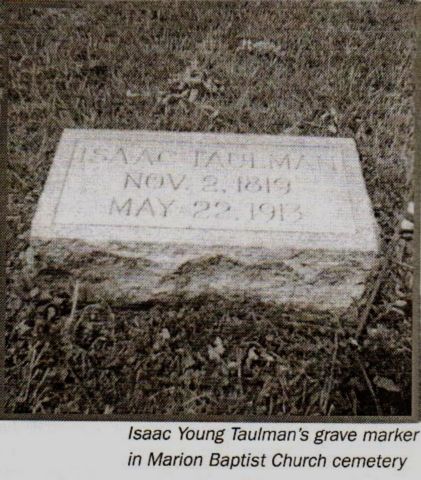 |
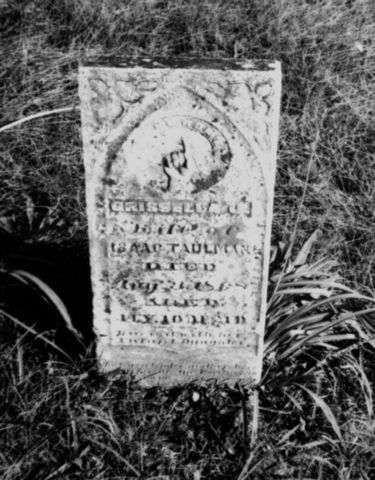 |
You may use this material for your own personal research, however it may not be used for commercial publications without express written consent of the contributor, INGenWeb, and